Sirius Signal announces new dual color & white SOS distress lights
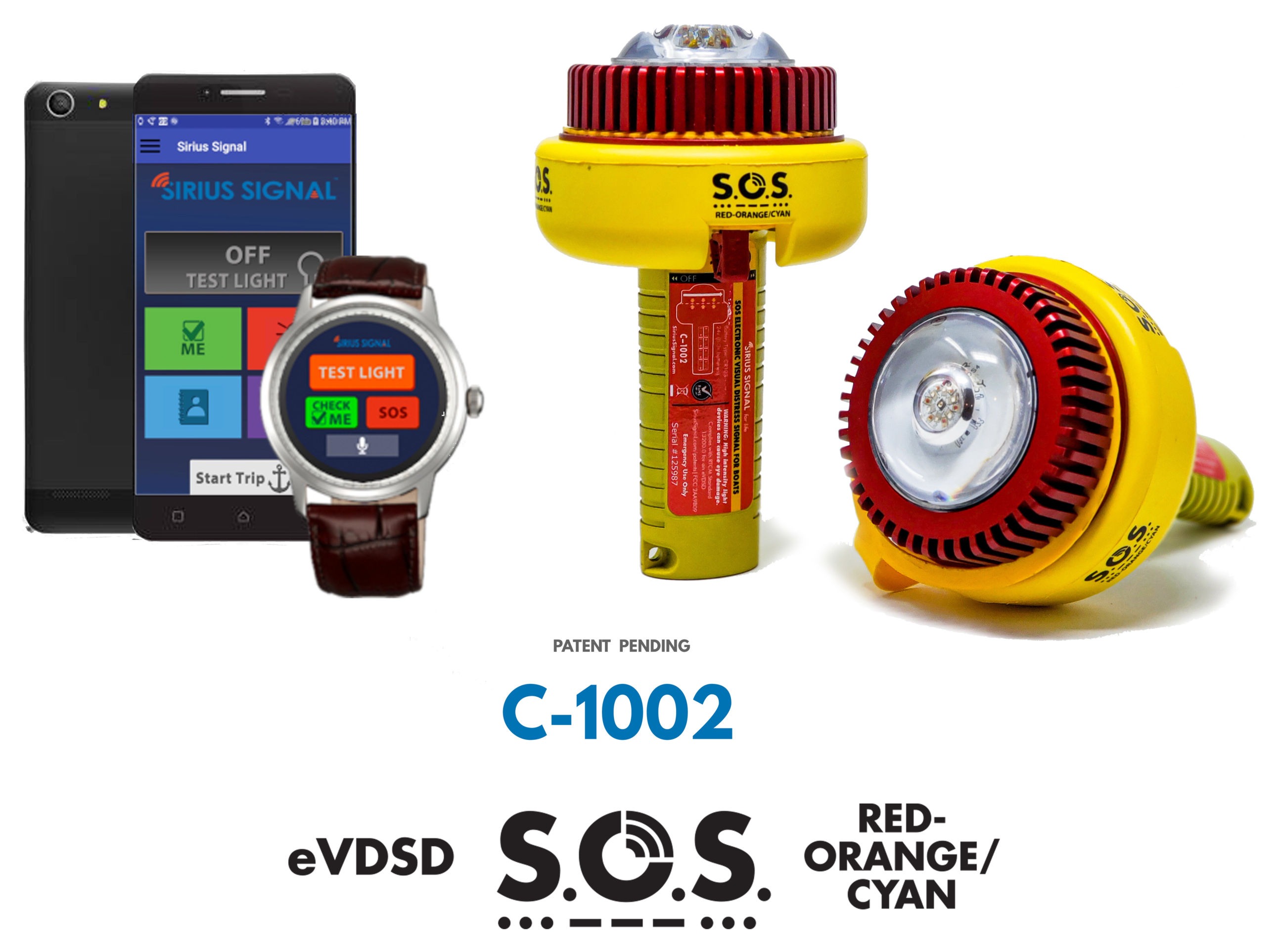
Sirius Signal just announced a super bright red-orange/cyan electronic Visual Distress Signal Device (eVDSD) that promises to be vastly more effective than the current white light models, especially in coastal areas with shore lights in the background. The new model C-1002 SOS device also includes a Bluetooth app for testing, maintenance, and much more. Note, however, that the C-1002 won’t be available until next year and its advanced technology will necessitate a premium price.
Additionally, Sirius has developed an improved version of its original C-1001 white eVDSD (2015 Panbo review here), and the company is taking over distribution of all its products (press release here). So in 2020, the Sirius Signal C-1001 design known to many boaters as the Weems & Plath SOS Distress Light that nicely replaced their pyrotechnic flares will become the Sirius Signal C-1003 with the dual color C-1002 a premium option.
While I haven’t seen either of the new distress lights yet, that will happen at the NMEA Conference in a few weeks, and here are some interesting details in the meantime.
C-1002 dual color SOS eVDSD
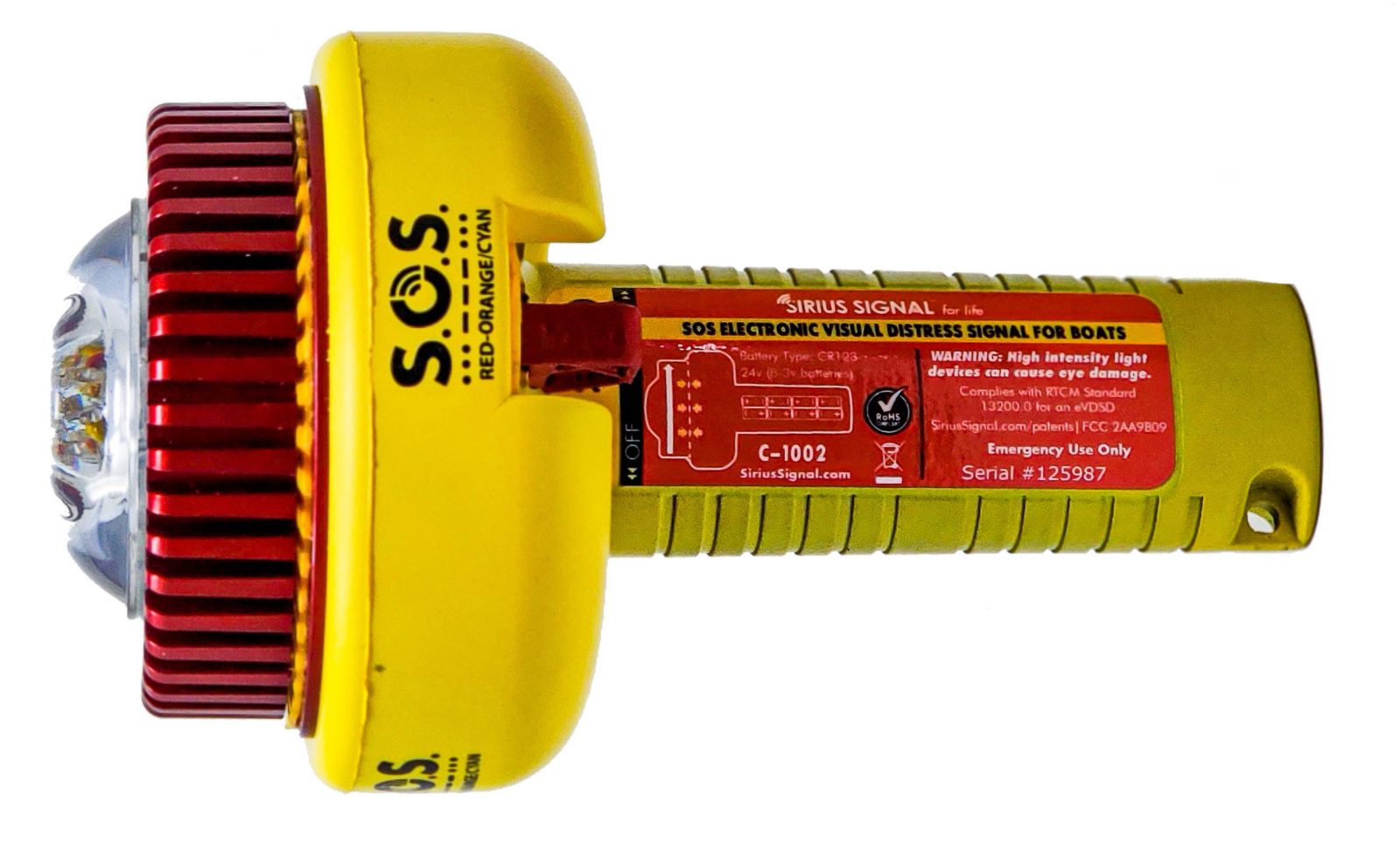
The differences between the dual color C-1002 and the white SOS distress light designs go well beyond the new colors, like a modern car compared to a Model T according to SiriusSignal.com. You can see some hardware details supporting that claim in the photo above: eight CR123A lithium batteries supply 24 volts of DC to an LED array so bright that a substantial aluminum heatsink is needed. I plan to take that warning about how “High Intensity Light devices can cause eye damage” seriously!
Also note the big red on/off switch that allows the C-1002 distress light to be activated with one hand. The original C-1001 (and the new C-1003) use a simple and reliable twist switch, but the new dual color standard (further discussed below) requires one-handed operation. In fact, the new switch is even designed to be operable by a hand inside the 3mm neoprene glove of a survival suit.

Here you can see the C-1002’s thirteen (13!) optically enhanced high-intensity light-emitting diodes. According to Sirius Signal, the six red-orange and six cyan LEDs alternately flashing out the S.O.S. signal “offer increased conspicuity against scattered white background light” and I believe them. Plus SAR personnel wearing night vision goggles will see this eVDSD better thanks to the infrared LED, which may even be detectable by satellites.
But wait, didn’t the original eVDSD have to be white to meet the U.S. Coast Guard requirement and therefore legally replace (personally dangerous and environmentally terrible) night flares? Yes, but then the RTCM 13200.0 eVDSD Standard was completed last June and in December the USCG accepted it as “equivalent” to the electric distress lights that meet 46 CFR 161.013. While this may sound like regulatory jiu-jitsu, I think it was the relatively fast track to getting us better distress lights built to an approved standard.
I have not read RTCM 13200.0, but the first eVDSD built to this standard — this Sirius Signal C-1002 — seems way more than “equivalent” to the existing white eVDSDs. Actually I gather that the standard is technically quite challenging, especially if the manufacturing goal is to compete with relatively cheap (though short-lived) flares or the still approved and seemingly effective white eVDSDs that typically retail for $90.
I certainly understand why a safety standards group would aim high, especially in our world of fast-evolving technology. But let’s also recall that there were no approved electronic distress lights available for decades, specifically until Sirius Signal figured out how to use LED technology to meet the CFR standard at a reasonable cost. And while I think that some boaters will buy a significantly more expensive eVDSD because it’s significantly more effective, it also makes sense to sweeten the deal with added safety features.
So the Bluetooth app that works with the C-1002 dual color eVDSD is quite separate from the new RTCM standard, not required and not involved. For instance, the Bluetooth radio chip is even separately powered with a button battery so there’s zero chance of it running down the big 24v LED supply.
But I’m guessing that the app will be great for checking the C-1002’s battery status. And as you can see above, you’ll be able to test or activate the light with your smart phone or watch (which should make it easier to avoid overexposing your eyes to the light show).
Moreover, the Sirius Signal new product page describes how the app will be able to send “Check Me” location messages ashore (within cell coverage) and even guide a boater through first aid procedures. And CEO Anthony Covelli told me to “think Tesla” in terms of app evolution.
C-1003 white SOS eVDSD
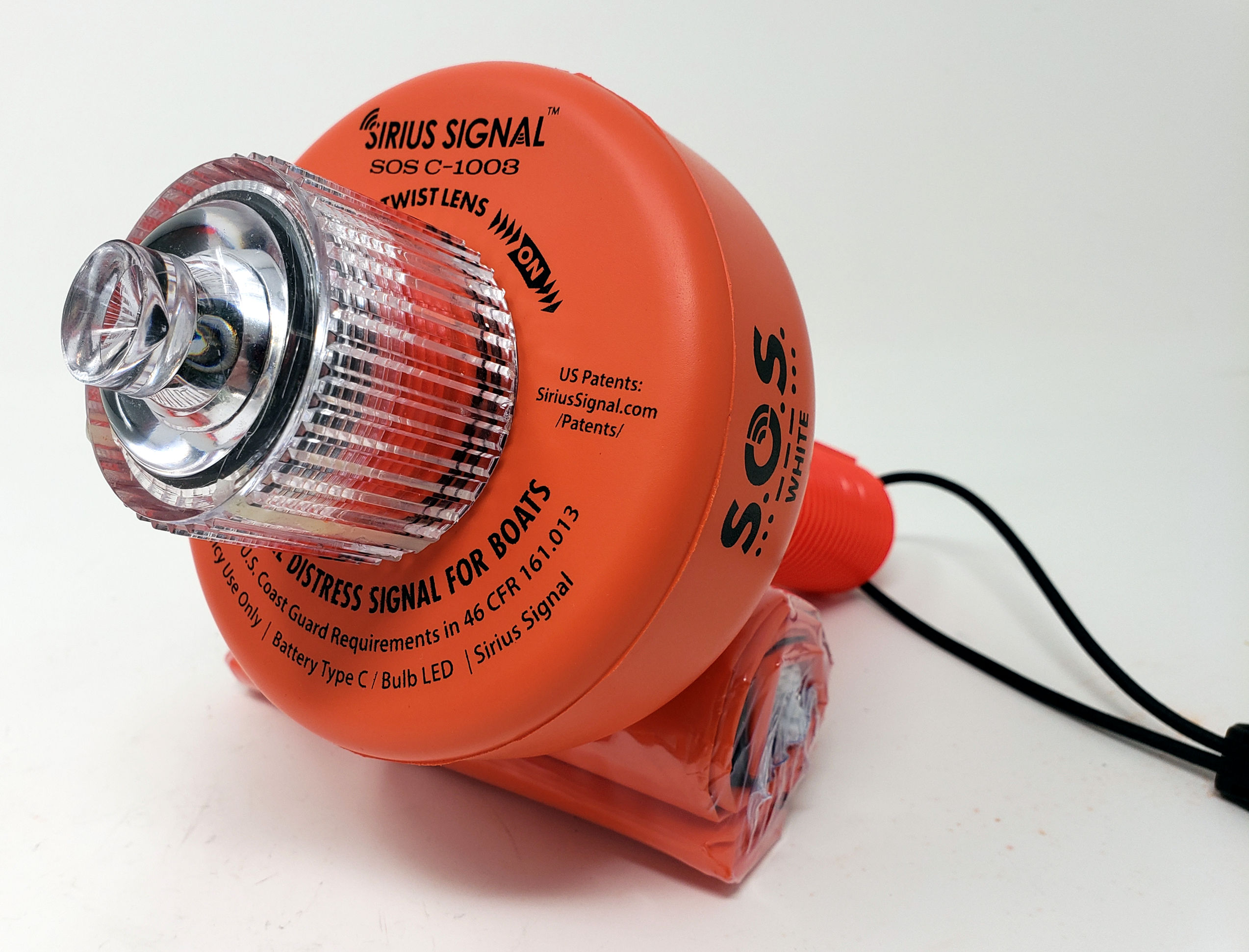
While the C-1002 is strikingly new and different, the new C-1003 white eVDSD is also good news. When I recently compared the original C-1001/Weems & Plath to the Orion Distress Signal, flotation was about the only factor where the Orion seemed to excel. The newly designed float collar on the C-1003 will clearly hold the light higher above the water, and Sirius Signal says they were also able to add at least 20% more brightness to the LED.
So it seems likely that comparing the C-1003 to the Orion will yield a clear performance winner. And I’m pleased to note that where the C-1001 design was already a clear winner in my comparison — user serviceability — also applies to the new models. A boater will be able to disassemble the C-1003 or the C-1002 for inspection and maintenance, and all parts will be available.
The C-1003 distress kit, now including batteries and a whistle as well as the orange day signal, will retail for $90 when available next year, while the C-1002 price is still not finalized. Defender Marine is already signed up as a Sirius Signal dealer and wide distribution is expected. And I look forward to reporting on the eVDSD demonstrations I’ll attend at the NMEA Conference.
PS 1/20/2020: Both the C-1002 and the C-1003 are now fully USCG approved — search “Electric Distress” here — and I plan an update entry soon:
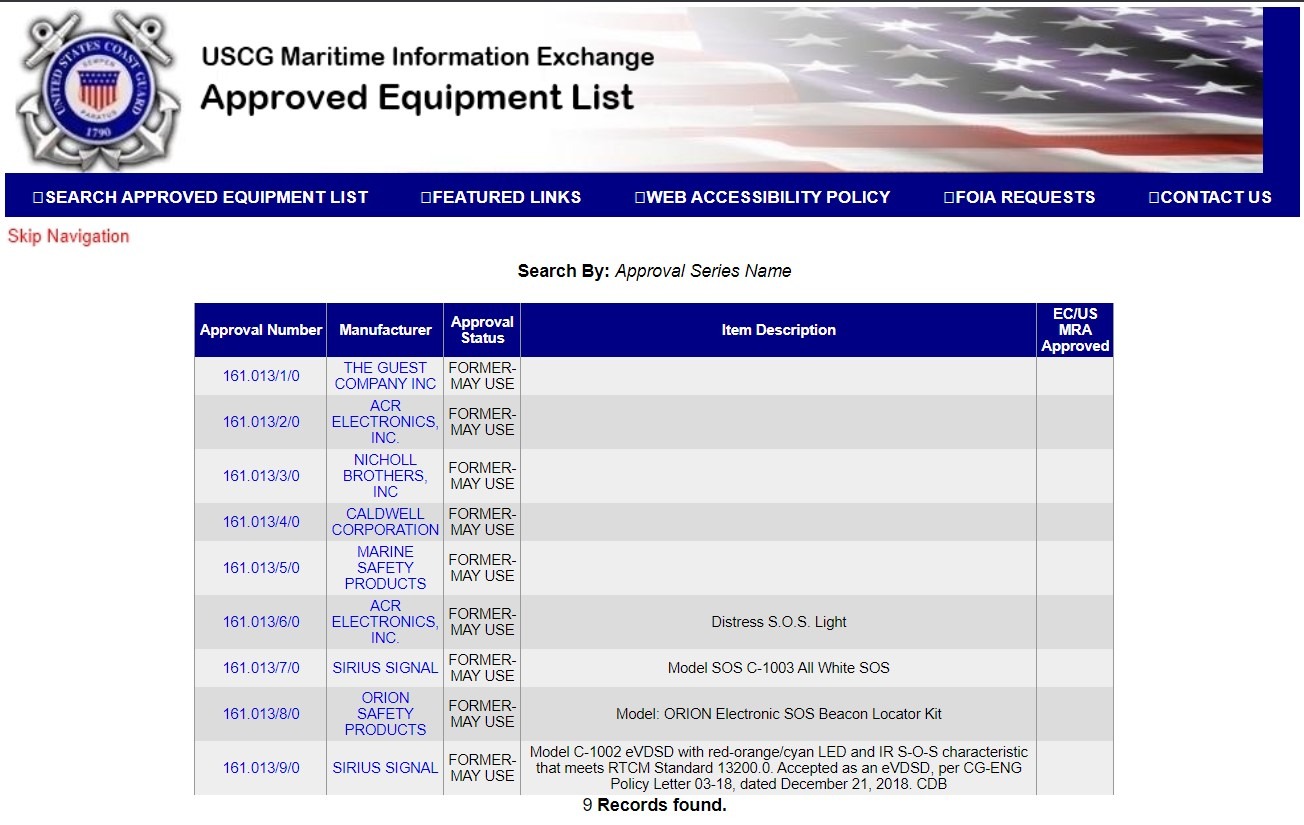



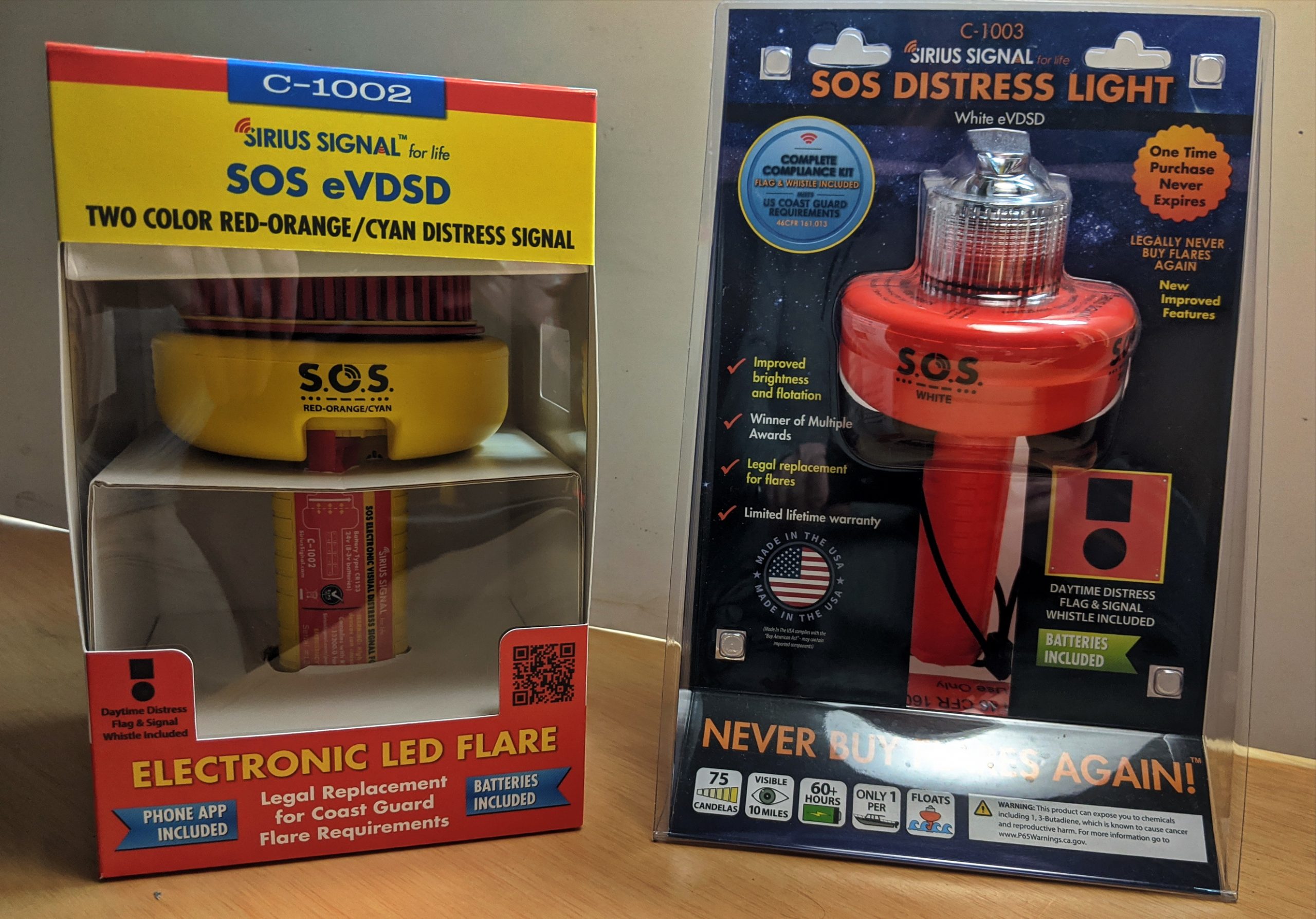
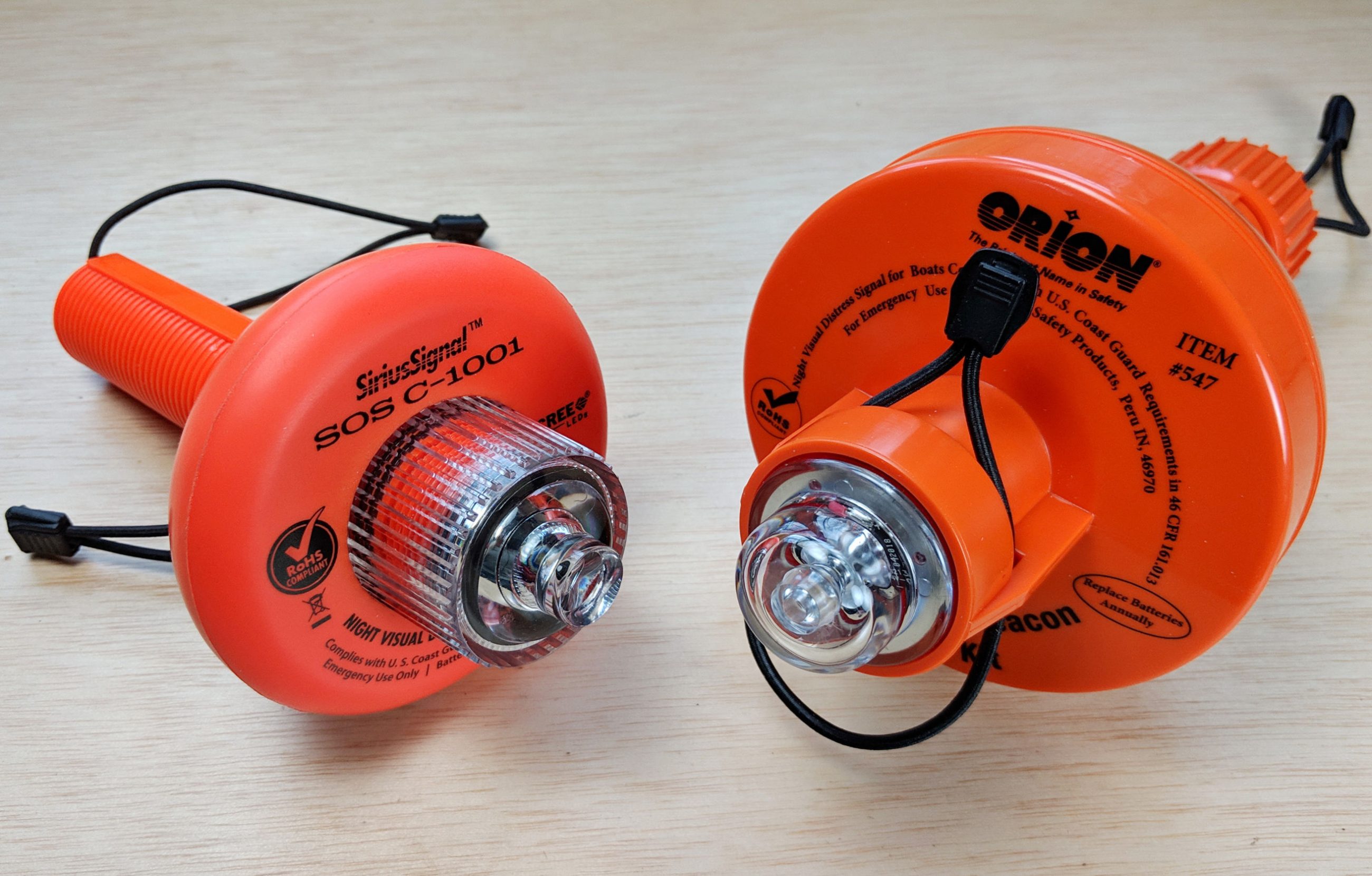
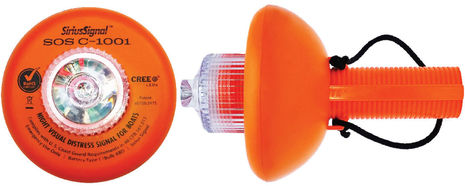
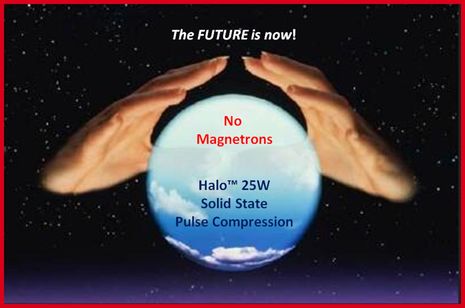







Hi Ben: What was the demise of SeaKey ? Has anyone replaced it with a satellite driven technology ? We boat in areas that have poor to no cell service and Tge old SeaKey always kept you connected.
Sorry for the very delayed reply, Bill, but the SkyMate Mazu/mSeries might serve your needs quite well. Here’s an early take, and many features have been added since:
https://panbo.com/skymate-mazumseries-all-in-one-iridium-sat-comms-si-tex-navstar-android-mfd/
Contrary to marketing, Sirius was NOT the first to come out with a CFR compliant signal light replacing flares. While poorly received by the boating public, and only available for a few years, I bought my first compliant light from ACR in the mid-90’s. Still using it today, although I bought one of the smaller and nicer new units for our new boat.
I haven’t carried incendiary flares in over 20 years!
Thanks, Keith, that’s interesting history. But I can’t find a trace of the ACR distress light on the internet and it seems quite possible that Sirius Signal has no knowledge of it either. It’s really unfortunate that there is no comprehensive repository of marine electronics history. I can’t even suggest where you could donate that light if you’re ever done with it.
But I’m pretty sure that ACR had a representative on the RTCM working group that developed the latest 13200.0 eVDSD Standard, and I will not be surprised if they come out with their own version. And I’ll expect it to be quite good.
Indeed, it has vanished from the records. I spoke to the ACR rep at the Annapolis Boat Show last week, and I hadn’t even finished describing it before she was nodding in understanding.
Keith,
The ACR light was built to section 161.013-3 a basic incandescent design point and shot. Sold horribly somewhere in the 1980s. They can still be accepted today if you have one Sirius built 161.013-5 it is quantum leaps from the ACR boat anchor. Factually and correctly Sisiriu Signal wa first to market with the light we can buy today
There is no doubt that the modern units are vastly superior (as is the case for most electronics over the last 30 years!) and what I carry. And you are right that the Sirius is the first to meet paragraph A for intensity. Perhaps Sirius is making the claim that they are the first to meet that particular feature. But the fact remains that ACR was the first to make a USCG compliant SOS light substitute for flares. And given the danger of flares and the virtual non-use of them, they were at the time a giant step forward. Perhaps a larger step up from flares than the step from ACR to Sirius.
Sirius claims it is the first to produce a USCG-compliant LED light, which is completely accurate, as the older lights mentioned were incandescent technology.
Orion (or as it was probably known then, Olin) also produced at SOS light back in the 80s, around the time when everyone became aware of the carriage requirements for VDSs. As I recall, it was like a lantern battery flashlight, and would blink out the characteristic SOS Morse code. The ACR light came much later, and appeared to be a variation on a molded lantern battery spotlight (but I think both of them used dated D cells rather than lantern batteries).
The combination of the SOS lights and the orange/black day signal allowed boaters to meet Coast Guard equipment standards without pyros on board.
Thanks, Chuck! I’m happy to report that the improved Sirius Signal C-1002 is now for sale…
https://siriussignal.com/shop/sos-c-1003/
…and I understand that the dual-color C-1002 has passed all the testing that’s part of the new RTCM standard. News on that, along with pricing and availability should be out soon.
Happy to report that the dual-color C-1002 has also now passed the lab testing required and has been accepted by the USCG, see the entry PS above.
Ben, can either vendor tell you, and us, if and when these products will be acceptable for use in sailboat racing?
Dan, I’m not sure what you mean.
There’s only one vendor discussed here, Sirius Signal, and now both their eVDSDs are approved by the USCG to meet the requirement for a nighttime distress signal (normally filled by flares). So, of course, they’re acceptable for use on sailboats and in sailboat racing, just like whatever nighttime distress signals are carried now.
I know that some race committees require more than mandated and approved safety gear, but that’s another story. I wouldn’t be surprised if some extra safety conscious offshore races like Bermuda and Fastnet eventually require a dual-color eVDSD and maybe pyrotechnics too, but that has nothing to do with the manufacturers or regulatory bodies like the USCG.
Dan, Ben:
Excellent question! Dan’s asking if the newly developed LED hand “flare” will be allowed in sailboat racing. The equipment used in sailboat races is governed by US Sailing and the OA or Organizing Authority (the people who put on the race). US Sailing has created the Safety Equipment Requirements, or SERs, that describe the gear required for Nearshore, Coastal, and Ocean races.
For many years, ocean racers have been required to carry SOLAS specification pyros, including handflares, smoke flares and rocket parachute flares. The number of flares that is carried has been reduced over time due to the increased capabilities of other signalling devices and technologies (DSC/Rescue 21, EPIRBs, SEND devices, etc.)
The SERs are updated every year with new requirements or simplifcations. You can expect the new generation of signalling devices like the Sirius SOS light to be considered as a replacement to the SOLAS handflare requirement. I don’t see why they wouldn’t immediately be considered a replacement for any races that require USCG-level handflares, as they would be superior in any aspect I can imagine.
Yes, what Chuck wrote. We are required to use SOLAS flares (higher standard than USCG) and include types of flares that USCG does not, such as parachute flares, when sailing Category “A” races that go outside Long Island Sound into the ocean. Below is the link to the safety rules we are required to follow. They, in turn, look for guidance from US Sailing and World Sailing (formerly ISAF)
https://www.yralis.org/sites/default/files/Minimum_Equipment_and_Safety_Recommendations_YRALIS.pdf
Nice! The C-1002 dual color SOS eVDSD is officially priced at $300 and ready to ship from Sirius Signal (or Amazon):
https://siriussignal.com/shop/c-1002-sos-distress-light/
You can also download the C-1002 documentation there, and the app is available for iOS or Android:
https://siriussignal.com/application/
I already have the app loaded and am told that a test unit will head my way tomorrow,.